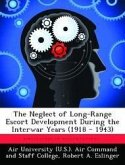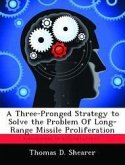"The 2006 Quadrennial Defense Review Report (QDR) directed the Air Force (AF) to "develop a new land-based, penetrating long-range strike [LRS] capability to be fielded by 2018." To meet this directive, the AF began a capabilities-based planning effort that is primarily ahistoric. The paper presented here uses case studies of the B-52 and B-1 to suggest attributes the next generation LRS should incorporate. Although the military is often accused of fighting the last war, the USAF should not ignore lessons from the past. Historical reflection often helps identify trends. This knowledge, combined with capabilities based planning, offers the best guide for future aircraft design. The best source for LRS historical trend analysis comes from the B-52 and the B1. The B-52 is over fifty years old and the B-1 over twenty years old. Although designed for a very different threat, both bombers have played a significant role in the Global War on Terrorism. Additionally, both have been considered for retirement during their service, yet today the Chief of Staff of the Air Force considers them so useful that he "flew the wings off them." Identifying why the bomber force has adapted so well should provide valuable lessons to incorporate into the next generation LRS design. The study examines six operations spanning 1945-2007 for historical lessons. This period of time covers nuclear concerns of the Cold War, major combat operations in Vietnam, as well as operations such as Desert Storm, which some experts claim represented a revolution in military affairs. Amazingly, both bombers have been incredibly useful in every conflict studied. The analysis of the B-52 and B-1 case studies reveals eight common core attributes: 1) all-weather, 2) flexible weapons carriage, 3) heavy gross weight, 4) heavy payload, 5) high-altitude, 6) high-speed, 7) long-range, and 8) survivability. These appear critical in the overall success and useful capabilities the bombers provided to comba








